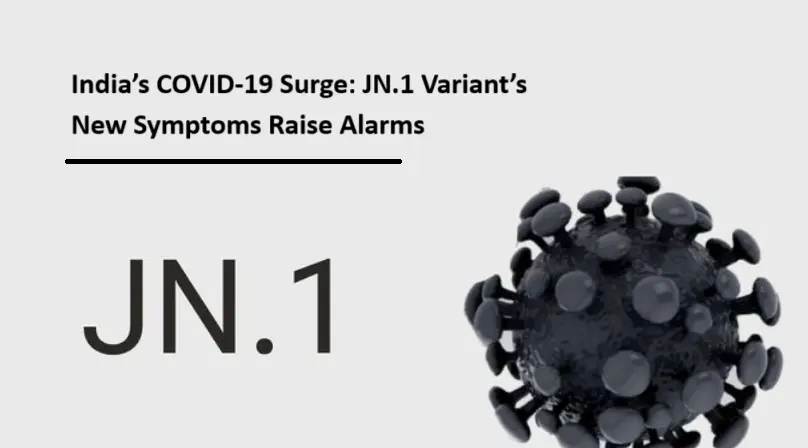
COVID-19 JN1 Variant New Symptoms Raise Alarms in India 2025
India’s COVID-19 Surge: JN.1 Variant’s New Symptoms Raise Alarms
India is grappling with a 2025 COVID-19 surge, surpassing 7,000 cases, driven by the JN.1 variant’s unique symptoms like conjunctivitis and fatigue. A Tamil Nadu serosurvey shows 97% elderly immunity, but concerns linger. Here’s what you need to know to stay safe.
It’s 2025, and just when we thought COVID-19 was fading into the background, India is facing a chilling resurgence. With over 7,000 active cases reported by June, the JN.1 variant—a sneaky descendant of Omicron—is stirring fear and uncertainty. Unlike the coughs and fevers we’ve come to know, this variant brings unexpected symptoms like conjunctivitis (pink eye) and debilitating fatigue, leaving many wondering if they’re battling a cold or something more sinister. A recent Tamil Nadu serosurvey revealing 97% immunity among the elderly adds a hopeful yet complex twist, but the virus’s rapid spread demands our attention. This isn’t just a health scare—it’s a wake-up call to stay vigilant, informed, and prepared.
The JN.1 variant, first detected in Luxembourg in August 2023, is a crafty evolution of the Omicron BA.2.86 lineage. Its 30 mutations, including a key spike protein change (L455S), make it 1.5 times more transmissible than earlier variants like XBB.1.5, according to Yale Medicine. In India, it’s driving 53% of cases, with Kerala, Maharashtra, and Tamil Nadu hit hardest. Mumbai’s KEM Hospital reported two deaths in May, while Kerala logged 2,223 active cases by June. “This variant spreads like wildfire, but most cases are mild,” says Dr. Sharad Joshi, a pulmonologist at Max Healthcare. “Still, we can’t let our guard down, especially for the elderly or those with comorbidities.”
What makes JN.1 particularly alarming are its unique symptoms. Beyond the familiar sore throat, fever, and cough, patients are reporting conjunctivitis, persistent nausea, and extreme fatigue that lingers for days. “I thought it was just allergies,” shares Anjali Nair, a 32-year-old Chennai teacher who tested positive in May. “My eyes were red and itchy, and I was so tired I could barely get out of bed.” These subtle symptoms, often mistaken for flu or seasonal allergies, make early detection tricky. The Times of India notes that in Chennai, doctors are now linking fever cases to COVID-19, urging testing for anyone with these signs.
The Tamil Nadu serosurvey, conducted in April 2024, offers a glimmer of hope. It found that 97% of elderly participants had IgG antibodies against SARS-CoV-2, indicating robust immunity from vaccines or prior infections. “This suggests our elderly are well-protected,” says Dr. T.S. Selvavinayagam, Tamil Nadu’s Director of Public Health. “But a non-virulent strain like JN.1 can still pose risks for those with comorbidities.” The survey, covering 3,643 seniors across six districts, underscores the success of India’s vaccination drives—over 2.15 crore doses administered in Tamil Nadu alone by 2021. Yet, with waning immunity from vaccines given over a year ago, experts like Dr. Sylvia Karpagam warn that reinfections remain a threat, especially in crowded settings.
So, what can you do? Get tested early—RT-PCR or Rapid Antigen Tests (RATs) are widely available and crucial for catching JN.1’s mild but sneaky symptoms. “If you have red eyes, nausea, or unusual fatigue, don’t brush it off,” advises Dr. Joshi. Mask up in crowded places like markets or public transport, where JN.1 spreads easily. Booster shots are vital for high-risk groups, though India lacks updated JN.1-specific vaccines. Current mRNA vaccines, like those targeting XBB.1.5, still offer 41–50% protection against JN.1, per a 2024 Eurosurveillance study. For treatment, antivirals like Paxlovid and supportive care (rest, hydration) remain effective for mild cases.
Misinformation is another hurdle. X posts claiming JN.1 is “just a cold” or that vaccines are ineffective are spreading faster than the virus itself. “Stick to credible sources like WHO or ICMR,” urges Dr. Karpagam. The Health Ministry’s dashboard, reporting 7,121 cases as of June 11, 2025, is a reliable starting point. With deaths reported in Kerala, Maharashtra, and Karnataka—mostly among those with comorbidities—vigilance is non-negotiable.
This surge is a reminder: COVID-19 isn’t gone. Share your story with #COVIDIndia2025 to raise awareness. Test, mask, and consult your doctor if symptoms persist. Together, we can keep India safe.
References: India Today, World Health Organization, Times of India